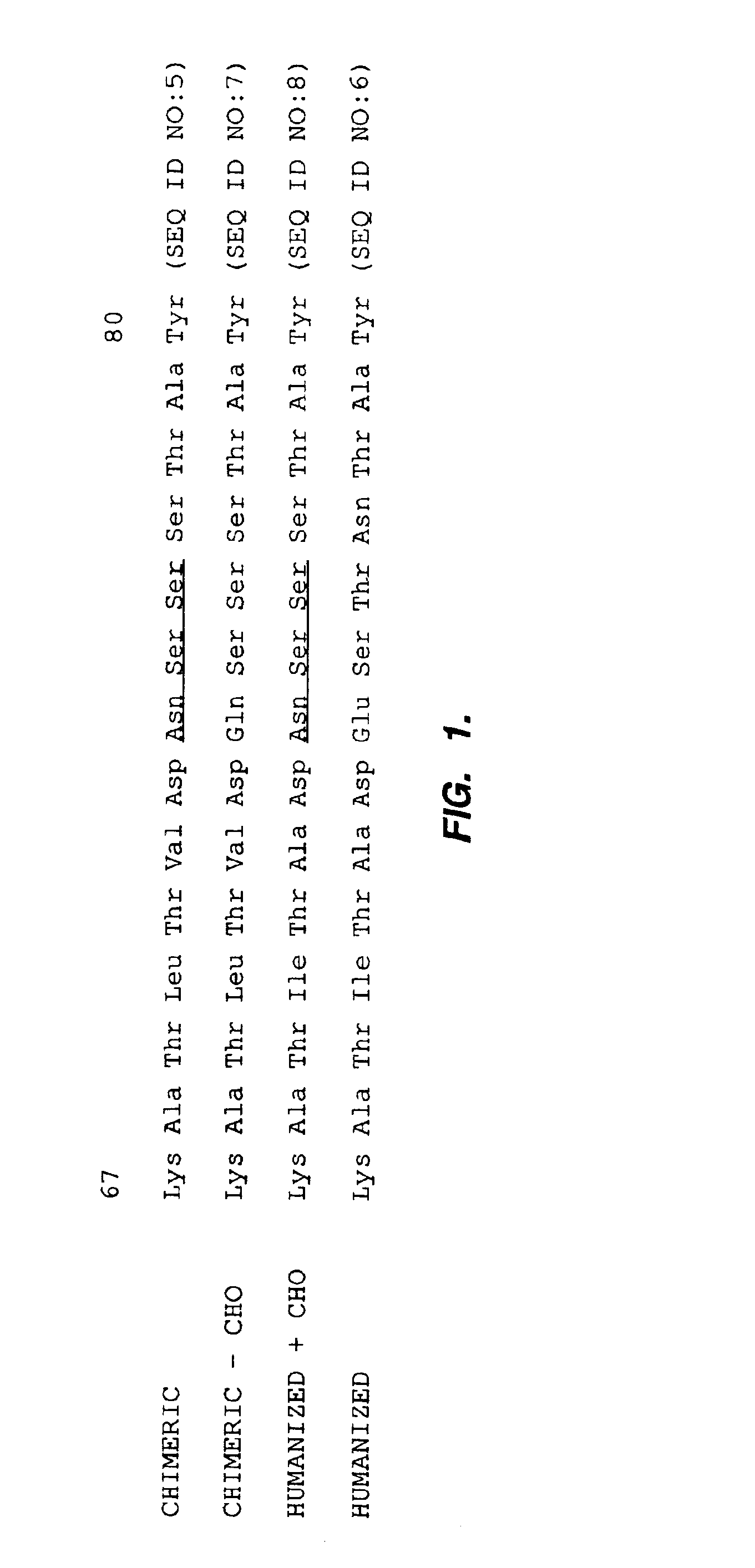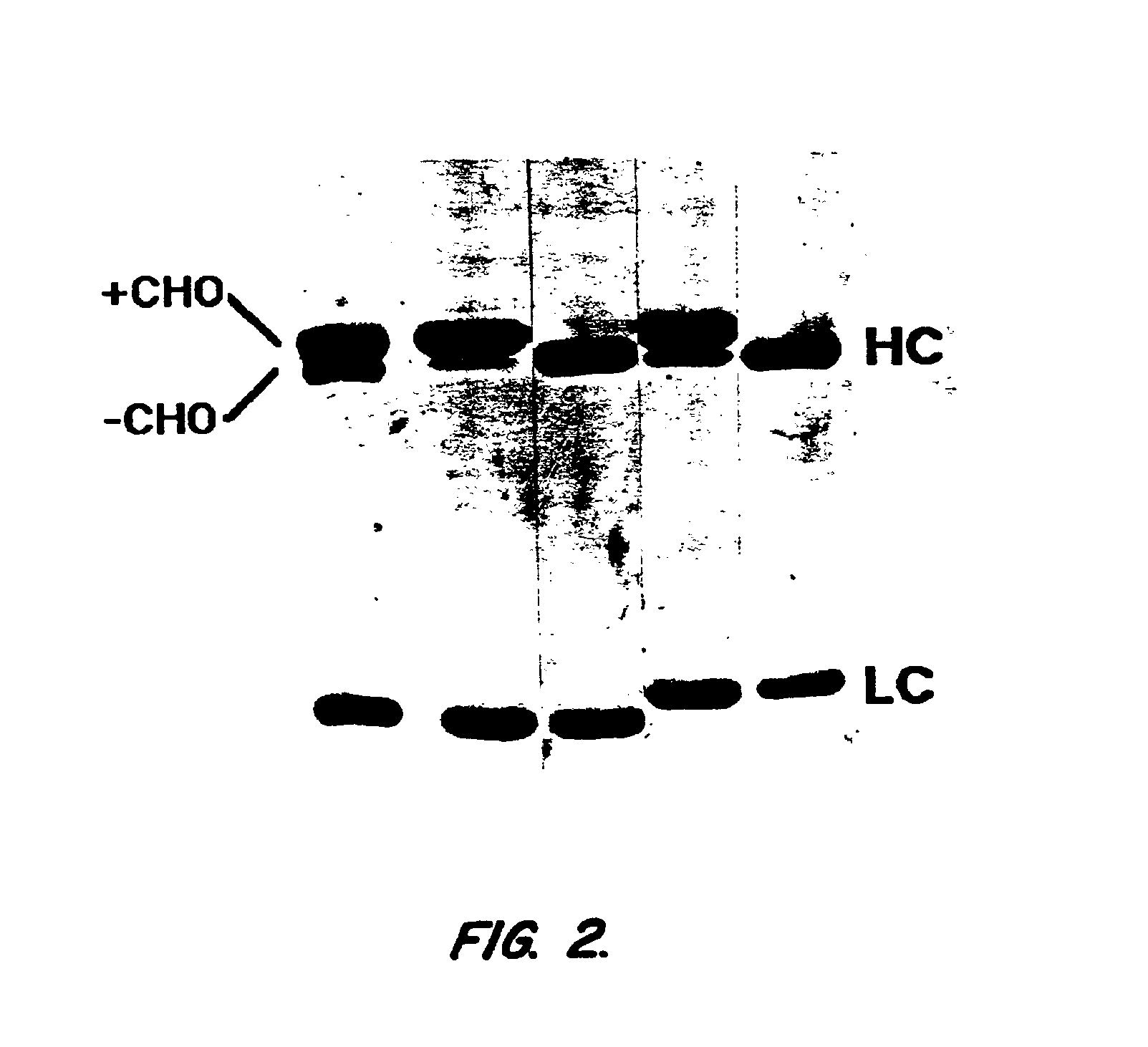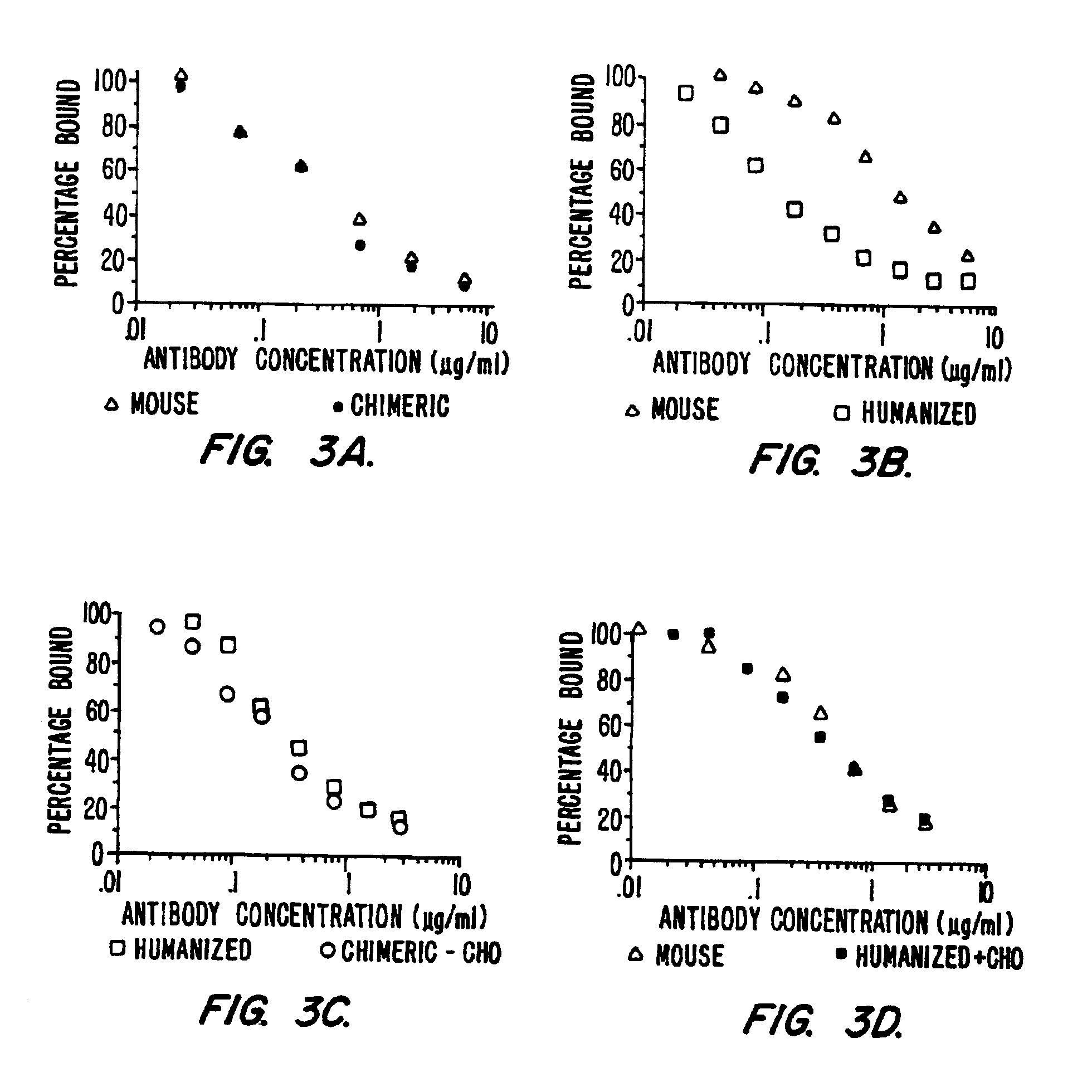Increasing antibody affinity by altering glycosylation of immunoglobulin variable region
a variable region and antibody technology, applied in the field of mutationally altered monoclonal antibodies, can solve the problems of loss of affinity for the antigen, significant immunogenicity problem, and general failure to immortalize human b-cells or generate human hybridomas capable of producing human immunoglobulins against a desired antigen, and achieve the effect of improving the binding properties of the antigen
- Summary
- Abstract
- Description
- Claims
- Application Information
AI Technical Summary
Benefits of technology
Problems solved by technology
Method used
Image
Examples
experimental examples
[0061]Generally, the nomenclature used hereafter and the laboratory procedures in recombinant DNA technology described below are those well known and commonly employed in the art. Standard techniques are used for cloning, DNA and RNA isolation, amplification and purification. Generally enzymatic reactions involving DNA ligase, DNA polymerase, restriction endonucleases and the like are performed according to the manufacturer's specifications. These techniques and various other techniques are generally performed according to Sambrook et al., Molecular Cloning—A Laboratory Manual, Cold Spring Harbor Laboratory, Cold Spring Harbor, N.Y., 1989. Other general references are provided throughout this document. The procedures therein are believed to be well known in the art and are provided for the convenience of the reader. All the information contained therein is incorporated herein by reference.
[0062]Recombinant DNA technology was used to humanize M195 by combining the complementarity det...
PUM
| Property | Measurement | Unit |
|---|---|---|
| affinity | aaaaa | aaaaa |
| cell surface glycoprotein | aaaaa | aaaaa |
| structural stability | aaaaa | aaaaa |
Abstract
Description
Claims
Application Information
 Login to View More
Login to View More - R&D
- Intellectual Property
- Life Sciences
- Materials
- Tech Scout
- Unparalleled Data Quality
- Higher Quality Content
- 60% Fewer Hallucinations
Browse by: Latest US Patents, China's latest patents, Technical Efficacy Thesaurus, Application Domain, Technology Topic, Popular Technical Reports.
© 2025 PatSnap. All rights reserved.Legal|Privacy policy|Modern Slavery Act Transparency Statement|Sitemap|About US| Contact US: help@patsnap.com



